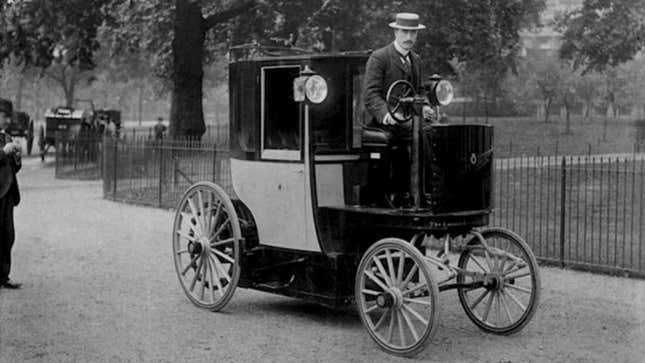
When 25-year-old London cabbie George Smith ran his vehicle headlong into a building (165 New Bond Street) under the influence of the drink, it would be 56 years until the first breathalyzer was invented. Nevertheless, on September 10, 1897 the Londoner became the first person in recorded history to be arrested for driving while intoxicated. Smith was one of just 12 men chosen to drive for Walter C. Bersey’s London Electrical Cab Company, and the newly christened electric cabs (pictured above) had only been in service for 22 days by the time of his arrest.
Smith was arrested by Police Constable Russell and—following his guilty plea—fined 20 shillings at the Marlborough Street Police Court.
Interestingly, the Bersey electric cabs were only in service from 1897 until 1899. Dubbed the “hummingbirds” because of their unique electric motor whir, the electric cabs quickly grew in popularity, but didn’t last. Because of the high weight of the battery-powered machines, they quickly wore through tires and frequently broke their wooden wheels. The operation was far from profitable, losing 6,200 pounds sterling in its first year of operation, and I’m sure Mr. Smith’s wreckage only exacerbated the expense.
According to the Royal Automobile Club, around seven percent of U.K. drivers admit to driving while over the “drink-drive” limit, though that’s down significantly from the 19 percent who said the same in 2019. Meanwhile in the U.S. drunk driving is responsible for around 32 percent of all car crash fatalities.
It’s probably true that the world could have cracked down on drunk driving a lot harder than a 20 shilling fine back when the first instance was recorded, and maybe a lot of lives would have been saved in the interim. It’s never worth it to drive drunk, just ask George Smith.

